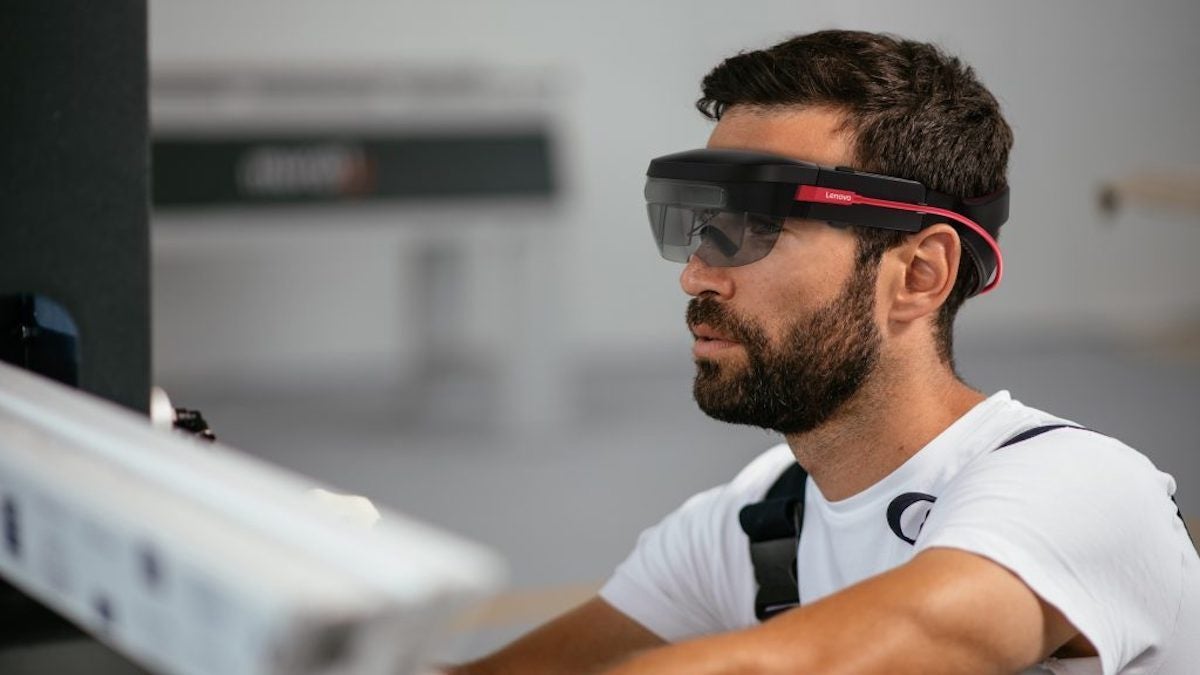Welcome back to AWE Talks, our series that plucks the greatest hits from the vast AWE conference archive. To get the juices flowing for AWE USA 2021, we're highlighting insightful videos from the recent past.
We continue the series this week with a look at enterprise AR implementation best practices. Though AR is often framed as a no-brainer for industrial enterprises, it takes a lot of brain work in aligning technological and organizational variables.
So how do you pick the right path and avoid common pitfalls? Lenovo's Michael Leone breaks it down for us. Given Lenovo's full-stack ThinkReality platform, its secrets to success can be gold for any Enterprise AR players planning their own paths to market.
See the full video below along with TLDR (or TLDW) quick-hit takeaways.
– AR isn't a silver bullet in the enterprise. Applicable areas include real-time remote support, maintenance and quality assurance.
– Enterprise AR will likely benefit in the Covid era as 63 percent of businesses believe it will accelerate their XR adoption.
– When delivering a new product like AR, there's some advantage in existing enterprise sales relationships.
– There are also advantages in integrating AR with already-deployed enterprise technology (as Lenovo has).
– Because AR is so unique in its technological underpinnings, a full-stack approach can achieve tightly-integrated systems.
– But based on the challenges in owning the entire stack, partners are usually needed at some point.
– For Lenovo, that means providing its ThinkReality SDK for third parties to innovate on top of it with enterprise apps.
– This signals an opening for AR app developers to run with its SDK and utilize it as a go-to-market springboard.
 Want more XR insights and multimedia? ARtillery Intelligence offers an indexed and searchable library of XR intelligence known as ARtillery Pro. See more here.
Want more XR insights and multimedia? ARtillery Intelligence offers an indexed and searchable library of XR intelligence known as ARtillery Pro. See more here.
We continue the series this week with a look at enterprise AR implementation best practices. Though AR is often framed as a no-brainer for industrial enterprises, it takes a lot of brain work in aligning technological and organizational variables.
So how do you pick the right path and avoid common pitfalls? Lenovo's Michael Leone breaks it down for us. Given Lenovo's full-stack ThinkReality platform, its secrets to success can be gold for any Enterprise AR players planning their own paths to market.
See the full video below along with TLDR (or TLDW) quick-hit takeaways.
– AR isn't a silver bullet in the enterprise. Applicable areas include real-time remote support, maintenance and quality assurance.
– Enterprise AR will likely benefit in the Covid era as 63 percent of businesses believe it will accelerate their XR adoption.
– When delivering a new product like AR, there's some advantage in existing enterprise sales relationships.
– There are also advantages in integrating AR with already-deployed enterprise technology (as Lenovo has).
– Because AR is so unique in its technological underpinnings, a full-stack approach can achieve tightly-integrated systems.
– But based on the challenges in owning the entire stack, partners are usually needed at some point.
– For Lenovo, that means providing its ThinkReality SDK for third parties to innovate on top of it with enterprise apps.
– This signals an opening for AR app developers to run with its SDK and utilize it as a go-to-market springboard.
 Want more XR insights and multimedia? ARtillery Intelligence offers an indexed and searchable library of XR intelligence known as ARtillery Pro. See more here.
Want more XR insights and multimedia? ARtillery Intelligence offers an indexed and searchable library of XR intelligence known as ARtillery Pro. See more here. 


